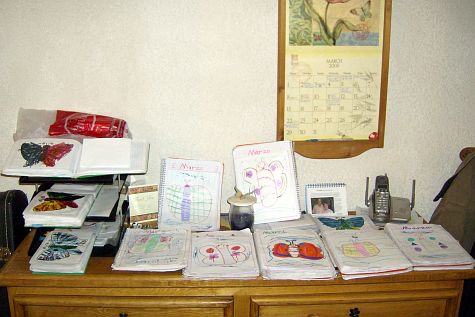Some glimpses of the National Anthropological Museum
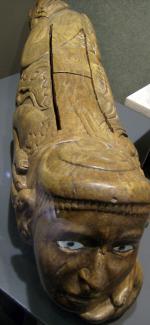 |
As promised, I wanted to show you a little bit from our visit to the anthropological museum in Mexico City earlier this month. I have a lot of pictures – I’ll try to post some in the photo gallery eventually. Meanwhile, here’s a taste of what we saw.
Naturally there were a lot of artifacts from past civilizations of Mexico. For example, this (on the right) I believe was from the Aztec period. It’s a teponaztli – a kind of a sacred drum or xylophone. It was believed that one of the gods was banished to earth in the form of this type of drum (more on Aztec music here).
Besides all the ancient history, there was room after room with information on the peoples of Mexico today. Some of the information about religious belief was fascinating.
Sometimes when people hear that Mexico is a "Roman Catholic" country, they think that’s like Roman Catholicism in Canada or the USA. But it’s actually very different, due to the syncretism that has taken place – the mixture of Christian beliefs with the ancient beliefs of the Mexican peoples. What this looks like varies greatly between different groups, city, country, different regions, and so on, but it is everywhere present.
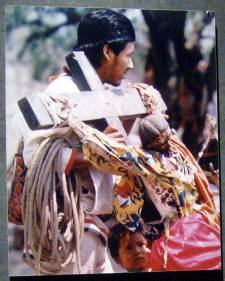 |
Take for example this group (pictured left), who like most Mesoamerican peoples had different gods for different purposes. When the new tools and beliefs came from Europe, they needed new gods for the new things. Today, many in these communities think of Christ as being mainly the creator of cattle, metal tools and money.
Many peoples in villages have beliefs based around the cycle of the crops. The Christian festivals that they emphasize are the ones that correspond with the stages of cultivation. The rituals that they do on these holidays (ie Christmas, the Day of the Holy Cross, etc) are designed to bring success to the crops.
Today, these festivals are livened up with things like modern sound systems and pyrotechnics. Below is an example of one ritual (I believe from Oaxaca).
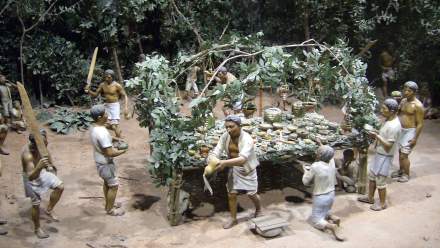
This next one is, I think, from the mountains of the state of Guerrero. The altar pictured below is meant to ask for rain for the crops. Certain people of "power" are considered especially close to the forces of nature. They can drive away bad spirits and use their magic to make it rain. Behind those flowers are crosses.
In this particular ritual, the white vulture is called on to make it rain, make the lightning kind, etc.
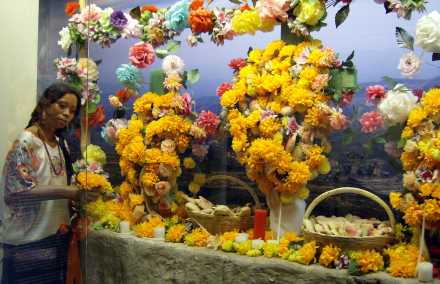
Remember, this isn’t ancient times – these are current beliefs. Remember also that in all these groups, Christian language is used. Talking to them, you might not catch the beliefs that are underlying the rituals, other than the fact that they are praying to God for their needs. But it’s much more than that.
As I’ve said, the beliefs and practices vary a lot from place to place. In the cities, you find people from all over the country, bringing beliefs from their villages and forefathers, and mixing them with what they find in their new home. And it is quite a mix.



